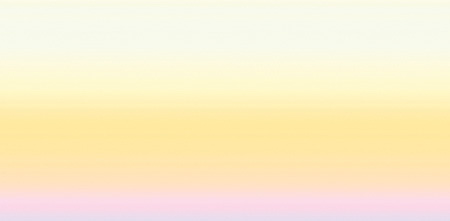
You tend to stand in front of a Norman Zammitt painting like you would a Mark Rothko--that is, silenced by its transcendent quality. You\'re awestruck by the subtly gradated bands of color stretching across mural-size canvases. The expanses often evoke sunsets, horizons and the sea, although that was not necessarily the artist\'s intention. Rather, he might have used these as an approach to the sublime--a portal to a mystical realm. In fact, closer inspection reveals the artist\'s mathematical progression of color, calculated not only for aesthetic precision, but also for emotional and spiritual effect.
Zammitt, who died in 2007 after suffering a heart attack and stroke at his Pasadena home, was a pioneer of Light and Space, arguably the most important art movement born in Los Angeles. Yet he flew below the radar, while others--including Robert Irwin, James Turrell, Larry Bell, Craig Kauffman, Douglas Wheeler and Peter Alexander--carried the torch for the movement.
In January, a refreshing exhibition of Zammitt\'s work appeared at Michael H. Lord Gallery in Palm Springs. The show, \"Norman Zammitt: Pure Light and Space,\" appears to punctuate a renewal of interest in his paintings, two of which will appear later this year in \"Crosscurrents in Painting and Sculpture,\" one of the Getty-funded Pacific Standard Time exhibitions tracing the history of art in LA from 1945 to 1980. (On a similar tack, the Museum of Contemporary Art San Diego opens \"Phenomenal: California Light and Space\" in late September.)
At Michael H. Lord Gallery, you encounter the 11-foot-wide Artic Yellow (1975), which radiates a rainbow of colors, shifting from a soft violet to shades of hot pinks, fiery oranges and yellows to hues of lime green. On an adjacent wall, Alternating Red and Blue--Two (1978) vibrates like a Dan Flavin installation, while Green One (1975) puts you at the foot of what could be an ocean, with its navy blue bands below graduating to bluish-green hues to light blue on top. A few canvases, such as Black to White (1977), have vertical bands. In this particular example, each end begins dark as night, while the center appears to glow like the moon in a saturated sky.
The hard edges of these bands bring to mind the school of LA artists who worked in Geometric Abstraction during the same period, predominantly the 1960s and \'70s, particularly Karl Benjamin\'s classic stripe paintings. But Zammitt\'s ethereal pictures defy any such classification. His edges appear seamless--a moment in space frozen in time. In fact, Zammitt worked with physicists and mathematicians at CalTech \"to satisfy his need to understand how light penetrates hues of color,\" says Joni Gordon, who represents the Zammitt estate.
Gordon suggests the exacting bands of brilliant color relate to Native Indian sand paintings, noting that the artist was raised on the Mohawk [Caughnawaga Indian] reservation near Montreal. \"As a Native American, he would acknowledge an effort to reach the spirit,\" says Gordon, known for her highly regarded Los Angeles gallery Newspace. \"He did it in an intense way of directing light and space toward the natural compass of the world. He drove himself to spiritual perfectionism.\"
Ultimately, a gallery full of these meditative canvases creates an environment of tranquility and contemplation--an effect that undoubtedly would have pleased Zammitt. The paintings exude a certain optimism, each one making a proposition and inviting you to engage it. At first, you might read the complex acrylic surfaces as a sunset, ocean or desert. \"As humans, we can\'t help delivering our experiences,\" Gordon says. \"Maybe these are references, obscured by translucence.\"
Zammitt earned his MFA in 1961 from LA\'s Otis College of Art and Design, where John Baldessari was one of his instructors. In an interview with Los Angeles Times critic Christopher Knight, Baldessari said of Zammitt: \"He could do anything. He was great. You know there\'s always the best student at school. He was the best student.\" In the interview, Baldessari was pointing out that Zammitt was a favorite of LACMA curator Maurice Tuchman. Gordon remembers the same, adding, \"[His paintings] moved him like nobody\'s business.\"
In the 2006 exhibition \"Translucence: Southern California Art from the 1960s and 1970s” at Pasadena\'s Norton Simon Museum, curator Michelle Deziel included Opal (1966), one of Zammitt’s early acrylic sculptures—transparent cubes containing other geometric shapes—among works by nine other artists, all associated with Light and Space and the Finish Fetish movement. He won a Guggenheim award in 1968, returned to painting in 1972, and received a Pollock-Krasner grant in 1991.
Because of their scale, Zammitt\'s paintings went largely to institutions. Among these are MOMA, the Corcoran Gallery of Art, and the Hirschhorn Art Museum on the East Coast, and LACMA, the Norton Simon Museum, the Palm Springs Art Museum, and the San Francisco Museum of Modern Art on the West Coast.
Later in his career, Zammitt forged into installation work, painting the walls, ceiling and floor of his Boyle Heights studio in ultraviolet-light-sensitive pigments. The otherworldly environment, a prototype he named Elysium, encapsulated his philosophical and technical visions. “Without representing anything, he leaves us with an experience,” Gordon says. Fittingly, in 2000, the Los Angeles City Council declared his studio a city cultural site.
This article was written for and published in art ltd. magazine 
